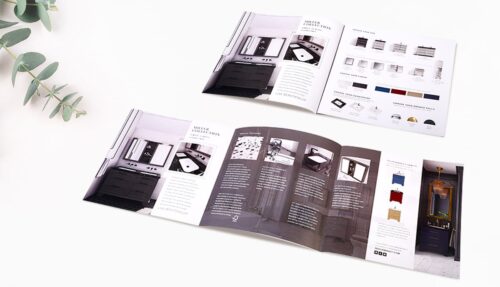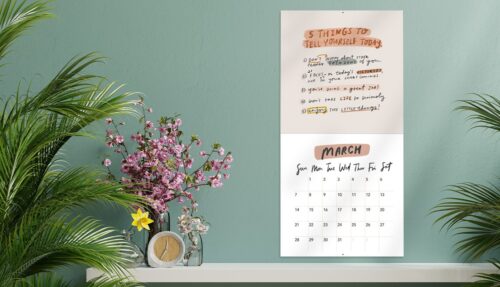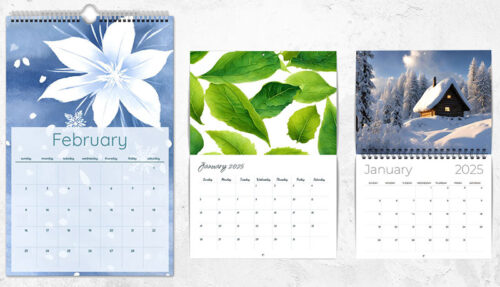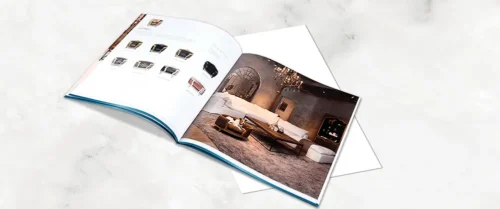Printed product catalogs are still among the most powerful marketing tools available. In this post, we explore the core principles of effective catalog design.

Photo by micheile dot com on Unsplash
Consumers love printed catalogs
Oh boy, do consumers love catalogs! Despite the expansion of online marketing strategies, the most recent data shows beyond doubt that customers still adore printed product catalogs. Not only that, but catalogs are super-powerful tools for boosting your brand, promoting goods, and increasing sales. Before we get into how to design printed product catalogs that sell, let’s just run through a few of these statistics to show you what we mean.
- Over 90% of householders check through the catalogs they receive through direct mail campaigns
- The average householder spends at least 30 minutes browsing through the direct mail catalogs they receive
- Almost 50% of consumers who get a catalog in the mail keep it and refer to it later
- Most consumers will keep a printed product catalog for 20 days, many keeping them for up to three months or more!
The above statistics are from The Harvard Business Review and a recent USPS report.
E-commerce companies boost sales with printed product catalogs
One of the most convincing arguments for the effectiveness of a printed product catalog marketing campaign — and why it’s such a worthwhile investment — is the number of big-name e-commerce brands that produce them. For example, according to The Wall Street Journal, the high-end clothing company, Bonobos, grabs 20% of its first-time customers via its printed catalog campaigns. While focusing on digital sales, Boden still produces monthly and seasonal printed catalogs. There’s only one reason for that. It’s because they work. Even Amazon — the world’s largest online retailer — uses printed catalogs to promote holiday sales. According to another mail marketing study, over 60% of consumers said they prefer to browse a printed catalog than a digital alternative and that doing so, 50% reported buying more products than they were looking for originally.
Enough said. It’s clear that printed product catalogs are here to stay, that consumers love them, and that they boost all sales, including online. But not all catalogs are created equal. A successful catalog that captures the imagination of the consumer, builds trust, and drives sales must be designed and printed to the highest standards. At QinPrinting, we print a lot of first-class catalogs for our repeat-buying business customers. So, we know what goes into making a printed product catalog that sells.
Start with a thematic structure
The basics of all catalog design are the more-or-less the same. It’s important that your catalog is instantly recognizable to the consumer and meets their fundamental expectations. But it’s equally important that your catalog is unique and showcases your products in an eye-catching and individual way. That’s where theme and structure come in. The core structure will typically include the following elements:
- Glossy, full-color cover dominated by high-impact photography
- An at-a-glance Table of Contents to help the consumer begin their browsing journey with the product categories which most interest them
- The product listings with photos, descriptions, technical information, price guides, and purchasing information
- Color-coded pages and tabs for longer catalogs to aid navigation
- Detailed index for rapid and effective look-up
Besides these essentials, you may want to add:
- An editorial-style introduction to the content
- Helpful magazine-style content such as “how to” pieces, staff interviews, style and mood guides, and more
- Customer reviews and testimonies
Bringing all of that together uniquely is about branding and theme. Your business brand — logo, tagline, colors, font, content style and so on — should be clear and consistent throughout the catalog. You can theme your catalog at several levels. So, for example:
- High-level theme: core branding with key concept, such as the sports brand Nike whose theme is winning, performance, and excellence.
- Demographic theme: this could target an age bracket, geographical location, social status or income. Think of Gucci, Chanel, Rolex, and Tiffany which all use themes designed to appeal to affluents.
- Seasonal theme: many clothing brands, particularly in the fashion market, tailor their catalogs thematically to promote their spring, summer, fall, and winter collections.
So, before you begin to write the content of your printed product catalog, decide on a theme and build a clear structure into which that content can fit. The theme and structure will make your catalog stand out from the crowd and also help you organize your content in a way that makes it easy for the consumer to understand and navigate.
Collect and collate your product information
Within your thematic structure — even with added content such as articles, reviews, and user guides — the product descriptions remain the core content of any catalog. The writing style will depend on the theme and your brand. But they should always be clear and informative and include both text and photography. Whether writing the product descriptions yourself, delegating to your marketing team, or outsourcing to a freelance copywriter, you’ll need to take inventory of all the required information to include in your printed product catalog descriptions. Here’s a useful checklist to get you started.
- Product range and name: what is your product called? Is it part of a range? Who is the manufacturer? Is there a generic name and a specific name?
- Categorization: how is the product categorized within your catalog? For example, most products fall within a category cascade such as: Home and garden — garden tools — lawnmowers — electric lawnmowers — cordless electric lawnmowers — 20v 5aH Craftsman
- Codes and reference numbers: products may have a range of numbers attached to them which could be useful to the customer when ordering or tracking an order. These include stock keeping unit codes (SKUs), catalog reference numbers, manufacturer’s product identification, model numbers and more
- Ratings and reviews: customer ratings — often in the star format or x-out-of-ten — and review quotations help build trust and consumer confidence
- QR and AR codes: adding quick response and augmented reality codes can help make ordering easier for your customers while also integrating your offline printed catalog campaign with your online digital sales points
- Barcodes: in several instances, customers will take the printed catalog with them into a branch of your physical store to buy a product. Having the barcode printed in the product description helps store staff locate and correctly price the product
- Prices: while both Bonobos and Amazon — mentioned earlier — have experimented with price-free catalogs, let your customer know how much your products cost
Once you have collected and collated this fundamental information, you’re ready to write or commission your product descriptions. Persuasive product description writing is a skilled task and is best given to the copywriting professionals in your company or outsourced to an experienced freelancer. But here’s a quick guide to the elements of a successful product description to get you started.
- Include all the essential details in simple, clear language
- Focus on the consumer’s needs
- Highlight the benefits of the product and the problem it will help the consumer solve
- Show the positive price/quality ratio
- Be clear about the applications and limitations of the product
- Include at least one photograph
This last point — to include a photograph — is especially important and deserves a closer look. We live in a highly visual age. To design a printed product catalog that sells, you must include photography. And the photographs must be beautiful and professionally made.
Photographing products for your catalog
Unless you are a skilled photographer and in possession of the latest equipment and software, we advise you to outsource your product photography to a professional. Ideally, choose a photographer who specializes in product photography — rather than a wedding photographer, a photo-journalist, or a portrait or nature photographer, for example — and decide whether you’ll ship products to their studio or have them work on site. Depending on the size of your catalog, you could end up with literally thousands of images to sift through; so, setting up a functional coding and tracking system that allows you to keep tabs on which image goes with what product is a must.
The images you create for your catalog depend on the products and your brand. For example, brightly lit product-only photos against a neutral studio background may just be the thing. Likewise, “action shots” showing ideal customers using the product in a real-world context may be more effective. Occasionally, adapt and enhance photos in editing software to create a specific mood or highlight a particular aspect. And you’ll need high-resolution digital photos (at least 300 DPI and ideally more) to give your printer to get the best reproduction.
Design the layout for your catalog
Designing the layout for an effective product catalog is as much a technical as an artistic process. Unless you’re qualified in print design and familiar with necessary software — such as Photoshop, InDesign, CorelDraw and others — we’d advise you to outsource the layout to a professional designer. We’d also suggest getting your printer involved at this point. The best printing companies will happily liaise with you and your designer as part of their service. For example, we can offer technical support, advice about bleeds, trim sizes, safe zones, color space conversion, paper types, finishes and more; all of which impact the design of your catalog.
Prepare your files for print
Your designer should know how to prepare files for print. We’re always here to collaborate and offer expert advice. Unlike many other printers who will just take your digital files and go to press, we really care about the quality of the product we make for you and the service we provide. That’s why our in-house designers will check all your files manually to make sure they are error free and truly “print ready” before we ink the plates and set the press rolling. If we find any errors, we’ll let you know and help you fix them.
Just like you, we want you to receive a perfect product that meets all your highest expectations. So, as a last check before we print your catalogs, we’ll send you a “proof” to examine. Only once you’re completely satisfied will we print your product catalogs.
Once they’re printed, we’ll double-check them for quality before packaging them with care and shipping them to you or your distributor. For orders under 100 copies, talk to us about digital printing. For a run of 100, 500, 1,000 or more, we recommend choosing offset printing as your printing method, as it will save you money while guaranteeing the highest quality.
Talk to us about your next printed product catalog
A well-designed and professionally printed product catalog represents a powerful return on investment. At QinPrinting, we’ve been working with businesses just like yours for the last 25 years and more, helping you to bring beautiful, powerful catalogs to your prospects; catalogs that build your brand and speak to your target market; catalogs that convert; catalogs that sell. So, talk to us about your next product catalog. We can’t wait to be part of your success!










